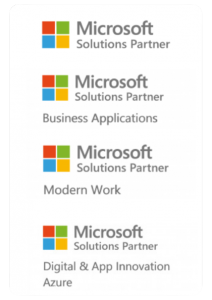5 reasons your organization should move to the cloud
What you should know about moving your organization to the cloud and the benefits of making the switch
Read on to learn about the security advantages and migration techniques of cloud-based tools. You may have heard a lot about the benefits of the cloud,
but do you know why—or how—it can help
drive greater impact?

From security advantages and organizational control of data to ease of use and in-creased agility, cloud-based tools can help your mission.
In fact, by transitioning to a cloud environment, you can take advantage of:
File access anywhere online

Secure data backups

Real time communication

business intelligence

1 Cloud-based applications are here to stay.
THE VALUE OF THE CLOUD

The cloud market is expected to pass $500 billion by 2020.1
ADOPTION IS GROWING
72% of organizations had at least one application in the cloud in 2015, a 15% increase from 2012.2
2 Security comes standard.
As cloud technology improves, security fears lessen. In a survey of enterprise IT managers, security is no longer ranked as the #1 concern when it comes to cloud computing.3
Enterprise IT managers who have rated cloud security as a significant challenge:
56%
of organizations reported storing sensitive or confidential data in the cloud in 2016.4
One of the biggest advantages of moving to the public cloud is the security team that comes with it. By moving to an enterprise-level public cloud, you’ll experience:

Scale
A public cloud will always be large enough to store and secure your data.

Intelligence
Public clouds monitor for millions of threats. As soon as one is detected on one customer tenant, the cloud provider can mitigate the attack across all other tenants.

Automation
Less human touch results in fewer mistakes and fewer opportunities for security breaches or insider threats.
We’re saving time and money. And every dollar we save is making it to the field to help those that
3 Move at your own pace.
Cloud migration does not need to happen all at once, and it’s recommended to migrate to the cloud
over time with a hybrid approach—the combination of an on- premises, private cloud and third-party, public cloud services.
On average in 2015, businesses were simultaneously experimenting with and running data on 3 public clouds and 3 private clouds.3

4 Using the cloud doesn’t mean new tools.
Moving to a cloud-based solution doesn’t have to mean retraining employees. Many solutions allow you to use the same applications your employees are used to, with access to files anywhere online.
The switch to Microsoft cloud services makes us significantly more efficient in normal times but will make us far more effective when we respond to a disaster moving forward.
Mike Manning
5 The sky’s the limit.
Cloud adopters see various benefits from their technology, although businesses’ top-cited benefits in 2016 include:3



